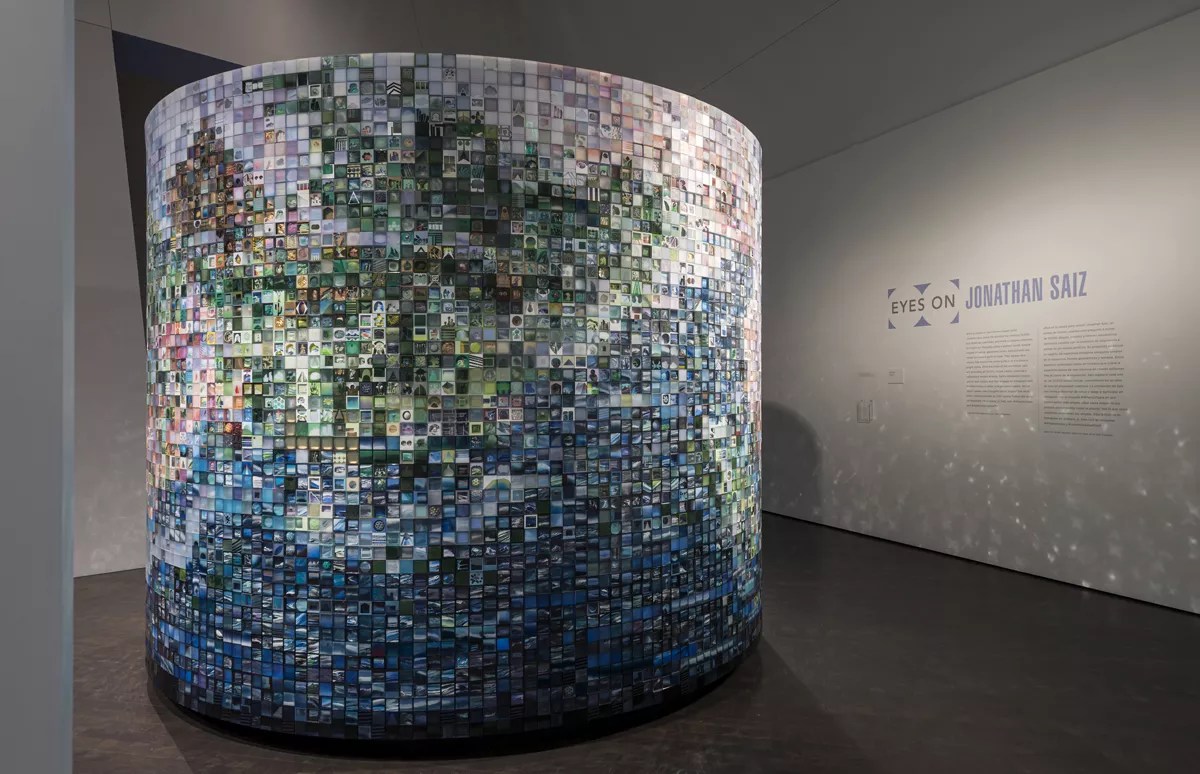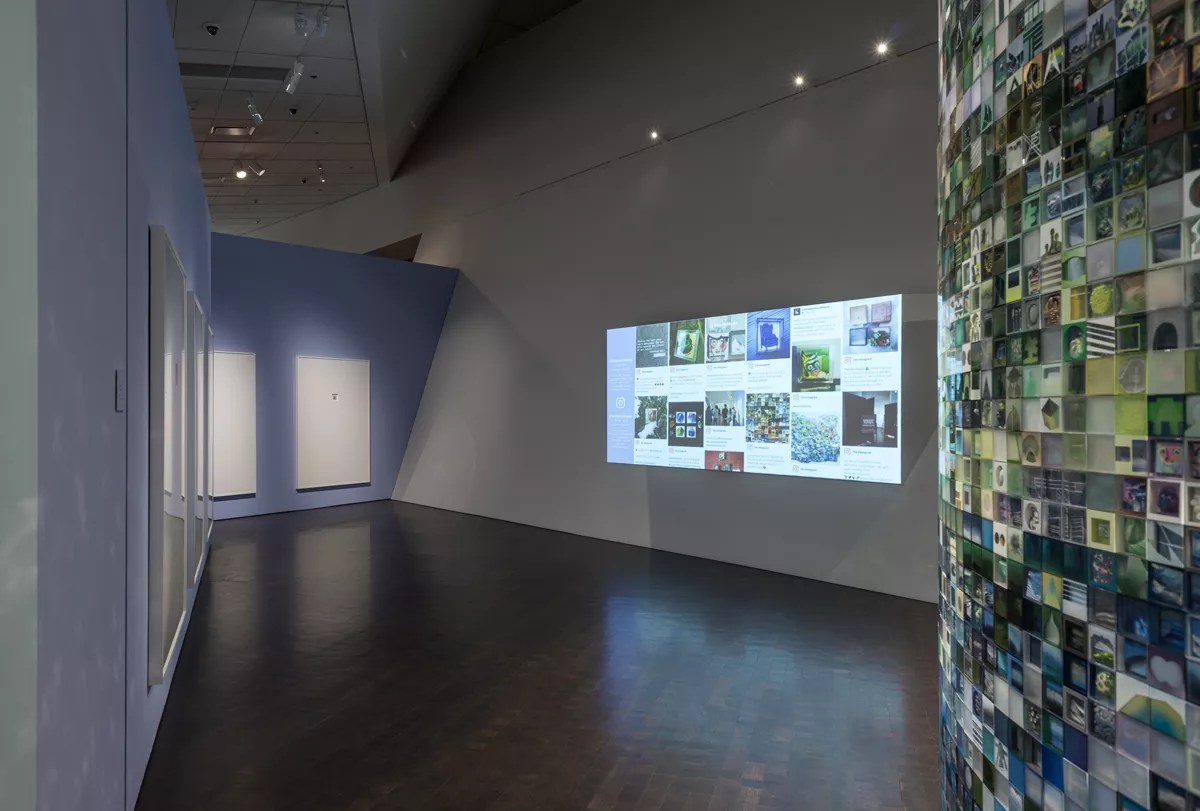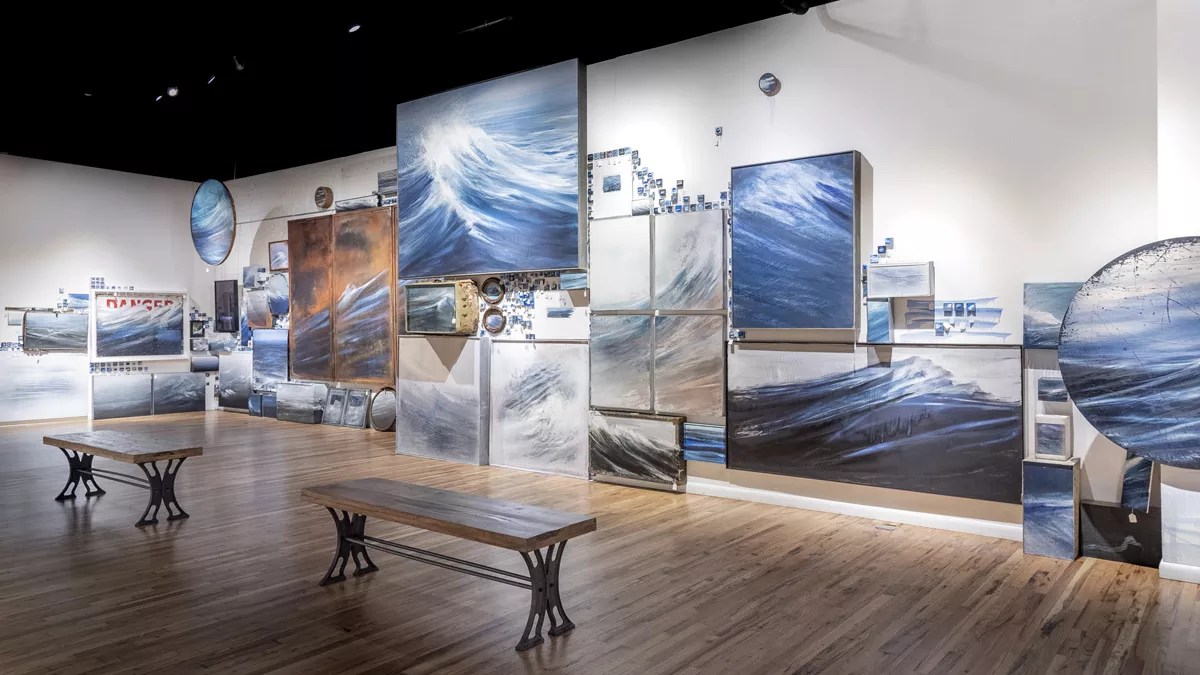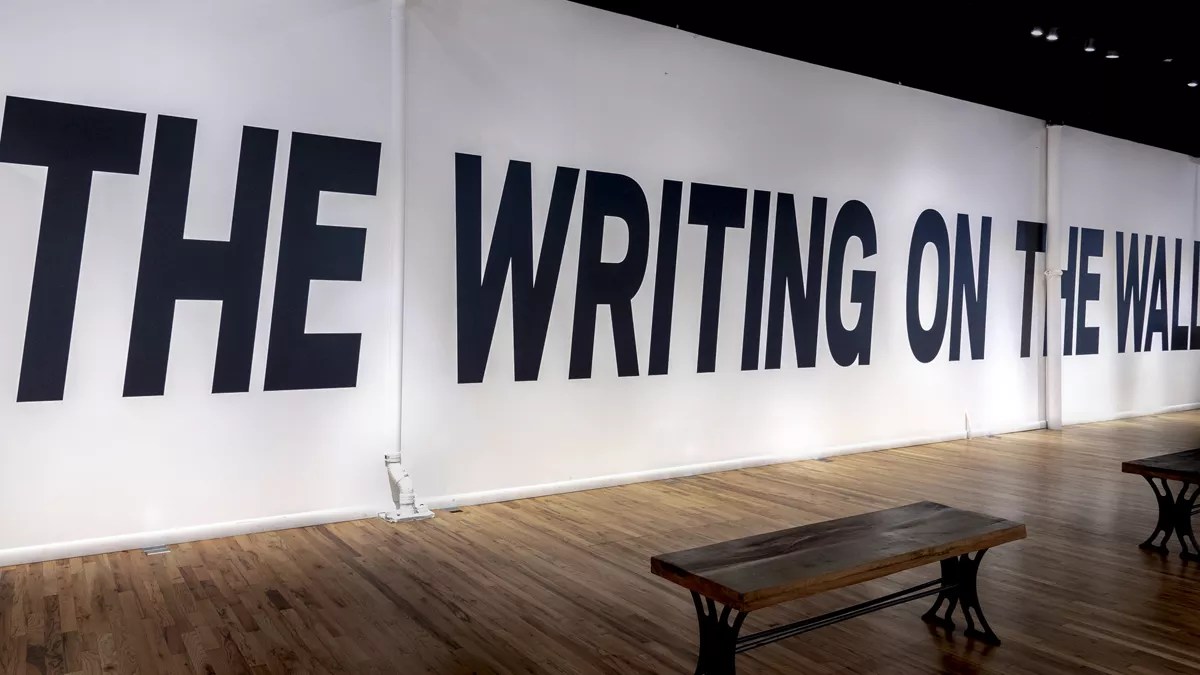
Courtesy of the Denver Art Museum

Audio By Carbonatix
Jonathan Saiz is at the top of his game, with a solo at the Denver Art Museum, Eyes on Jonathan Saiz, as well as K Contemporary’s Jonathan Saiz – Colorado Coastal. But the rarity of two simultaneous shows (particularly one at the DAM, where local talent has had a hard time getting in the door) is only part of what makes these exhibits remarkable. Together they include an astounding 11,000 individual works of art, all made in just the last several months.
Born in 1983, Saiz was raised in Thornton, where his parents still live. He studied at New York’s Parsons School of Design and at its program in Paris, as well as at the Maryland Institute College of Art. For the past fifteen years or so, he’s exhibited not just in galleries around Denver, but across the country and in Europe. The genesis of his current work dates back years, and it’s never been as sharply refined as it is now, particularly in the DAM display.
Saiz told me that he’d proposed a show of 100,000 tiny paintings to Rebecca Hart, the DAM’s contemporary art curator, a year or so ago; when he didn’t hear back, Saiz and his partner, Jason Gruhl, relocated to a remote, off-the-grid cabin in the Oregon wilderness. That’s when Saiz was contacted by Hart, who wanted to give him a solo. Five months before the show was set to open, Saiz and Gruhl moved back to Denver so that the artist could get started creating the proposed pieces, an astounding volume of work.

Individual works, Instagram projection and detail of column from
Courtesy of the Denver Art Museum
Denver, make your New Year’s Resolution Count!
We’re $10,000 away from reaching our $50,000 year-end fundraising goal. Your support could be what pushes us over the top. If our work has kept you informed and connected this year, please consider making a contribution today.
Looking at the DAM space and conferring with Hart, Saiz quickly realized that 100,000 separate parts would be too many, and he settled on the still-not-inconsiderable number of 10,000. For a long time, he’d been using small plastic boxes as his principal material, employing them to enclose paintings, reliefs, collages and other mediums carried out in miniature, and even etching the boxes themselves. He realized that the walls of the Logan Gallery on the museum’s fourth level would not hold the collective weight of the boxes, so he decided to have a ten-foot-high circular wall built, using the diameter of the columns at Karnak as his guide.
The overriding theme of the DAM show is an ideal future, and Saiz named the anchor installation “#WhatisUtopia,” with the idea of creating images evocative of utopian visions. But his visions are open-ended, meant to be interpreted by viewers in any way they want to. As revealed by the hashtag, Saiz is a master of social media, and he asked his many Instagram followers to send materials to include in the work. He let them know that he intended to ultimately give away the pieces and wouldn’t be getting any personal gain from whatever was sent to him.
Interested in social justice and environmental issues, Saiz particularly wanted things made of gold and gemstones because of the way the earth is marred through mining and because of the human-rights abuses suffered by miners – the whole “blood diamond” idea. And the hive mind on Instagram came through, sending him gold and other all-but-forgotten keepsakes that Saiz incorporated into the works. The performative aspects of the piece – both the donated found items and the plan to give away the components at the end of the show – are essential to Saiz’s aesthetic emphasis of de-monetizing art, part of his personal view of utopia.

Detail of separate pieces in plastic boxes encrusting the column in
Courtesy of the Denver Art Museum
The individual works in the plastic boxes display a variety of styles and include geometric and expressionistic abstracts, as well as depictions of people, landscapes, clouds and many other subjects. Saiz not only created the little artworks inside the boxes, but he also decorated the boxes themselves, often with the donated items. To give the piece an overall compositional sense of order, Saiz envisioned it as having the suggestion of the sea around the bottom, the sky around the top, and the land wrapping the middle. While these bands do not actually depict any of this, they subtly suggest the three realms.
Seen as an overall object, the 10,000 boxes comprised by “#WhatisUptopia” read like a non-objective mosaic, a column covered in little squares set hard against each other. According to Saiz, this tiling effect was unintentional, and he says he didn’t even notice it until the piece was being constructed – but it’s clearly successful visually. Also unexpected were the glittery reflections projected onto the gallery walls that surround the column, as spotlights reflect on the multiplicity of shiny plastic surfaces.
The art-encrusted column is extremely engaging, and the morning I saw it, viewers were studying it for a long time, as was I. The show also includes a suite of individually presented tiny boxes in oversized frames, meant to express ideals in different social realms. And Instagram comes in again now that the installation is finished, in the form of a projection of the constantly changing feed of @utopia_is_free with images tagged #WhatisUtopia or #JonathanSaizatDAM.

Accumulated paintings of waves from
Conor King, courtesy of K Contemporary
The feel-good engagement of the DAM show is flipped on its head for Jonathan Saiz – Colorado Coastal at K Contemporary. This installation is more modest in scope, but still staggeringly ambitious: Instead of 10,000 works, there are “only” 1,000. These are all about a dark future, one in which Colorado is under water owing to global warming. While Saiz knows this scenario is unlikely given the state’s elevation, he explains that he’s using sea-level rise as a metaphor that enables him to address the environment.
The K Contemporary exhibit is meant to function both as a single work and also as a collection of separate pieces. On one wall, in enormous vinyl letters, is the motto “The writing on the wall”; paintings of ocean waves wrap the other three, many of them simply leaning against the walls. The quote is meant both to raise the issue of climate change and also to refer back to Saiz’s childhood, when he was raised as a Pentecostal Christian (a belief system that he’s long since abandoned), since the quote is from the Bible.

“The Writing on the Wall” graphic in
Conor King, courtesy of K Contemporary
Whereas many different styles of work are featured on the “#WhatisUtopia” column, most of these ocean paintings are expressionist renditions of water. To create them, Saiz enlisted found surfaces as well as distressed ones, giving everything a sort of antique vibe. In contrast to the precisionist qualities on view at the DAM, this dystopian view is appropriately messy.
When I asked Saiz why he was so interested in creating such arduous projects so quickly, his response was surprising. He explained that he has a short attention span, which encourages him to move on to something new more or less constantly. But in the meantime, these two solos are definitely worth a long look.
Eyes on Jonathan Saiz, through November 17, Denver Art Museum, 100 West 14th Avenue Parkway
720-913-0131, denverartmuseum.org.
Jonathan Saiz – Colorado Coastal, through July 6, K Contemporary, 1412 Wazee Street, 303-590-9800, kcontemporaryart.com.